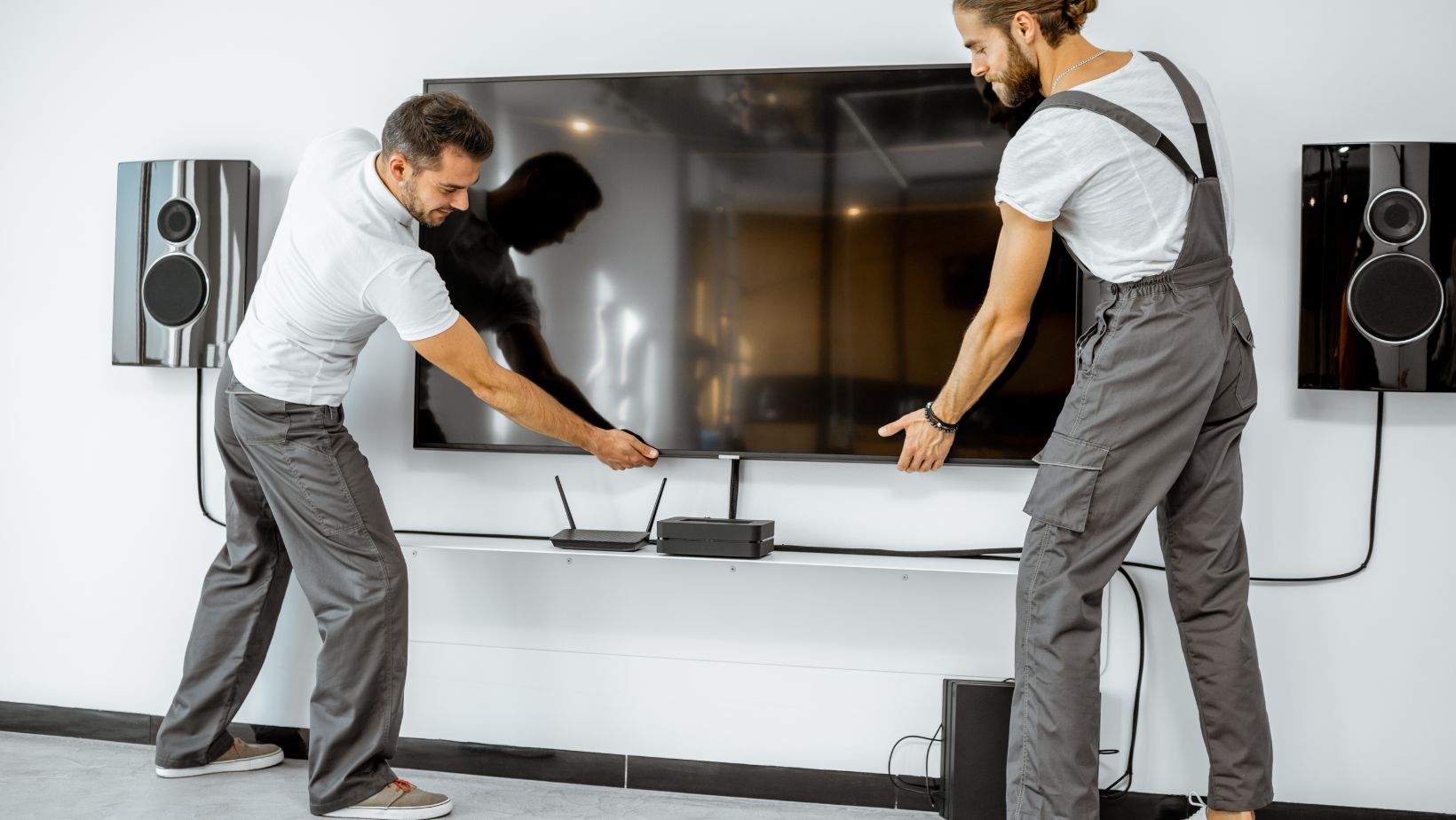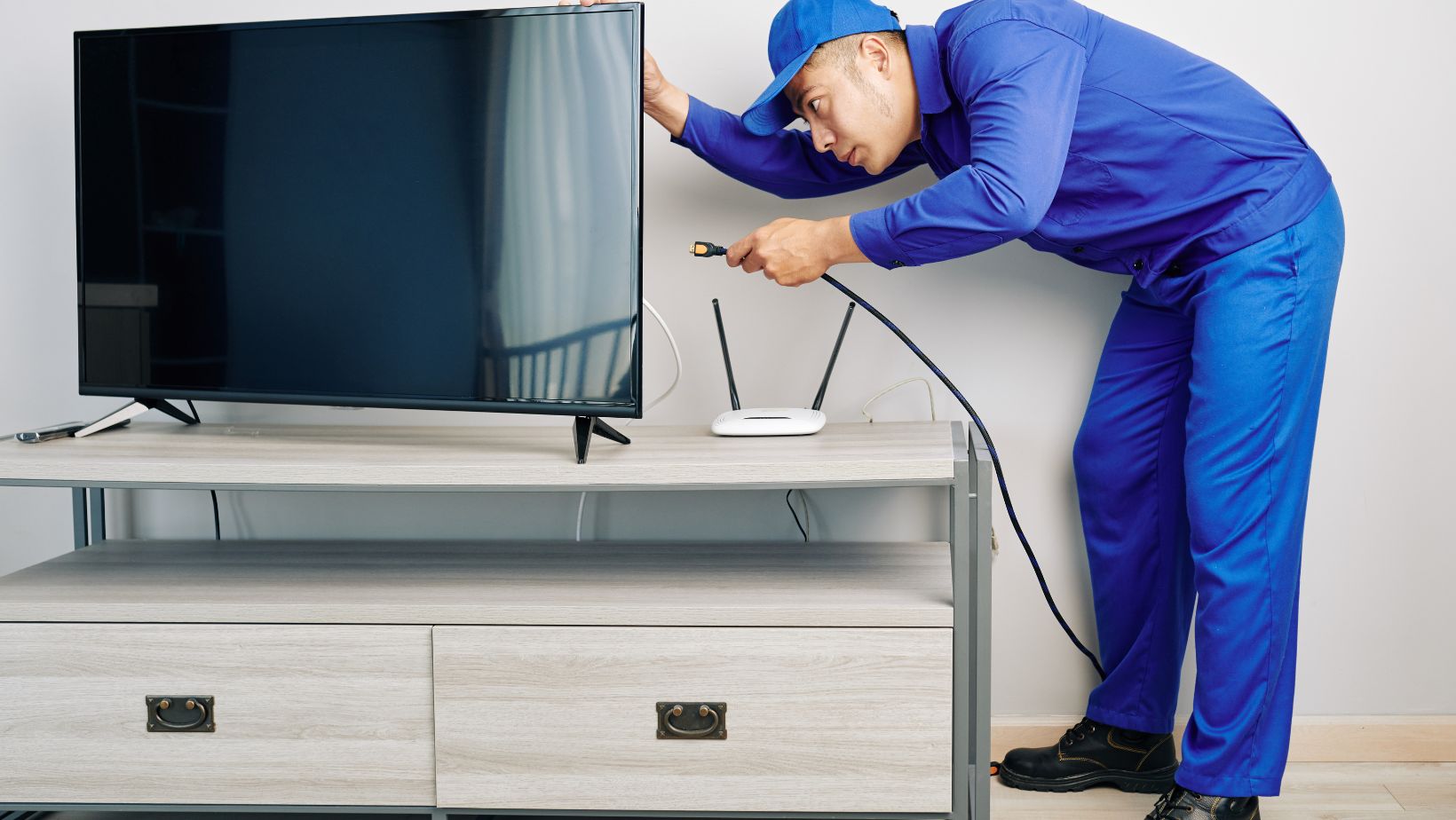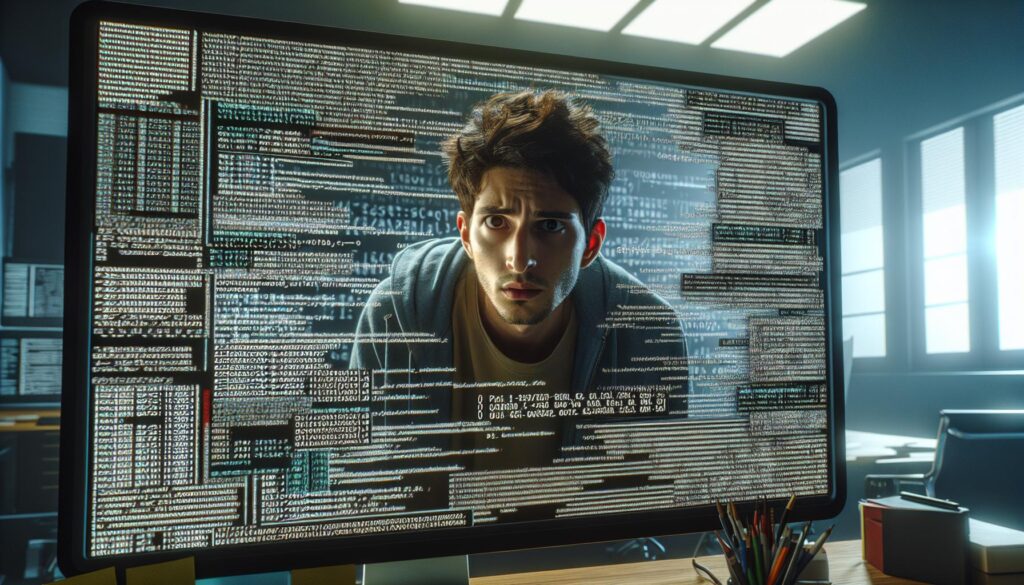Television installation might seem like a straightforward DIY project. Buy a fancy new telly, bring it home, plug it in & enjoy your favourite programmes, right? Not quite. The reality involves much more than simply connecting a few cables and finding an available outlet. When it comes to mounting a heavy glass-and-metal object on your wall—particularly one that costs hundreds or thousands of pounds—there’s significant risk involved.
There are numerous potential safety concerns associated with improper TV installation. From structural wall damage to electrical hazards and even physical injury, the risks of DIY installation can outweigh the perceived cost savings. That’s where professional installation technicians come into the picture.
Professional installers bring specialized training, proper tools, and extensive experience to ensure your television is mounted securely, safely, and optimally. Let’s explore the seven most important safety advantages of hiring expert TV installation technicians rather than attempting this job yourself.
1. Proper Wall Assessment & Secure Mounting
Did you know that a typical 55-inch television weighs between 15 and 25 kg? That’s a significant amount of weight to hang on your wall! Professional installers don’t just eyeball your wall and start drilling. They conduct thorough assessments to identify the structural elements behind your drywall or plasterboard.
Finding wall studs or appropriate mounting points isn’t always straightforward. What appears to be a solid section of wall might actually be hollow or structurally weak. Professionals use specialized tools like electronic stud finders, magnetic detectors, and sometimes even small inspection cameras to precisely locate the safest mounting points.
I remember when my neighbour attempted to mount his new 65-inch television himself. He was CERTAIN he’d found a stud, only to discover (after patching a rather large hole) that he’d actually hit a water pipe! The subsequent repair costs far exceeded what he would have paid for professional installation. Professional technicians understand different wall constructions—whether it’s drywall, plasterboard, concrete, or brick—and use appropriate mounting hardware for each specific situation.
2. Electrical Safety & Proper Cable Management
Television installation isn’t just about physical mounting—it also involves electrical connections. Professionals understand proper grounding requirements and can identify potential electrical hazards that might not be obvious to the untrained eye.
Cable management is another crucial safety aspect often overlooked. Dangling cords aren’t just unsightly; they pose genuine safety risks, particularly in homes with small children or pets. Professional installers implement proper cable management solutions, concealing wires within walls when possible or using appropriate cable covers and channels.
Technicians also understand the importance of surge protection and can recommend appropriate power management solutions to protect your expensive equipment from electrical surges. This might seem like a minor point, but considering the average UK household experiences several power fluctuations annually, a proper electrical setup can extend the life of your television significantly.
3. Prevention of Physical Injuries
Modern televisions are simultaneously lighter than old CRT models yet much larger in screen size. This creates an awkward balance situation where they’re deceptively heavy and extremely unwieldy. Attempting to lift, position, and mount these devices without assistance can result in serious physical injuries.

Back injuries are particularly common among DIY television installers. Professional installation teams come equipped with proper lifting techniques and, crucially, enough people to safely manage the weight. They’re also accustomed to working at heights and bring appropriate ladders or platforms designed for stability during installation.
Furthermore, professionals have experience handling these awkward shapes safely. They understand the delicate nature of screens and the proper grip points to avoid both personal injury and damage to the television itself.
4. Appropriate Hardware Selection
One of the most overlooked aspects of safe TV installation is hardware selection. Not all mounting brackets are created equal! Professional installers select appropriate mounting hardware based on: • Your specific television model and weight • The wall construction type • The desired mounting position • Movement requirements (fixed, tilting, or full-motion)
Using inappropriately sized bolts or the wrong type of wall anchors can lead to catastrophic failure. Professionals carry a variety of specialised fixings for different situations and know exactly which ones will provide the securest hold for your specific combination of TV and wall type.
They’ll also ensure the bracket itself is rated for the weight and size of your television. Using an undersized bracket might seem fine initially, but it can degrade over time, potentially resulting in failure months or years after installation.
5. Child Safety Considerations
For households with children, professional installers take additional safety precautions that might not be obvious to DIY installers. This includes securing all furniture that might be climbed (such as entertainment centres) and implementing anti-tip devices where appropriate.
According to the Royal Society for the Prevention of Accidents (RoSPA), furniture tip-overs cause thousands of injuries annually in the UK, with televisions being a common culprit. Professional installers can assess your entire entertainment setup from a safety perspective, identifying potential hazards that might not be immediately apparent.
They can also advise on cable management solutions that prevent children from pulling on dangling wires, which is not only an electrical hazard but could potentially bring a television crashing down. These small details can make an enormous difference in household safety.
6. Comprehensive Testing & Safety Checks
After installation, professional technicians don’t simply walk away. They conduct thorough testing to ensure everything is functioning safely. This typically includes: • Testing the stability of the mount under various conditions • Checking all electrical connections for proper function • Verifying that the installation meets building regulations • Ensuring that any furniture is stable and secure.

They’ll also test any additional equipment connected to your television, such as sound bars, gaming consoles, or streaming devices, making sure all components work together safely and efficiently. Perhaps most importantly, they’ll verify that the installation can withstand normal household activities without becoming unstable.
Many installers will even provide guidance on safe cleaning procedures, as improper cleaning methods can sometimes damage modern flat-screen televisions or compromise mounting stability over time.
7. Insurance & Liability Protection
Reputable professional installation companies carry insurance that covers potential damages during installation. This means that in the extremely unlikely event something goes wrong, you’re protected financially. DIY installations offer no such protection—if you damage your television, your wall, or worse, cause injury to yourself or others, you’re personally liable for all costs.
When selecting an installation service, it’s always worth confirming their insurance coverage. Most quality companies will happily provide proof of insurance upon request. This protection extends beyond the immediate installation—if a problem develops later that can be traced back to the installation work, professional companies typically offer guarantees on their workmanship.
Additionally, some television manufacturers specify that professional installation is required to maintain warranty coverage, particularly for larger or more expensive models. DIY installation could potentially void your warranty, leaving you unprotected if technical issues arise.
The Bottom Line
While the DIY approach might initially seem more economical, the safety advantages of professional TV installation cannot be overstated. From proper assessment and mounting to electrical safety, injury prevention, and ongoing protection, experts bring valuable skills and knowledge that significantly reduce risks associated with television installation.
The cost of professional installation typically ranges from £50-200, depending on complexity, which is a small price to pay considering the value of the television itself and, more importantly, the safety of your home and family. When weighing up your options, remember that professional installation isn’t just a convenience—it’s an investment in safety that pays dividends through peace of mind and proper function for years to come.



